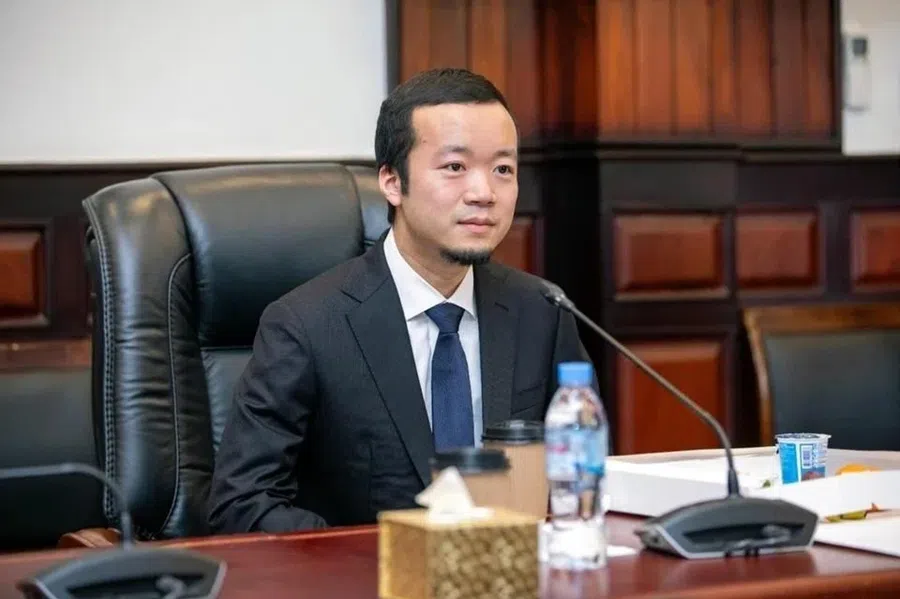Chengdu, where the everyday becomes art [Eye on Sichuan series]
Chengdu is a metropolis interwoven with tradition and modernity, embodying the paradoxical yet balanced relationship between “nature” and “construction”. Sichuan academic Zhang Jinyao takes us on a walk along the picturesque ancient alleys and streets of Chengdu, exploring how the everyday has shaped the city’s life, art and architecture.
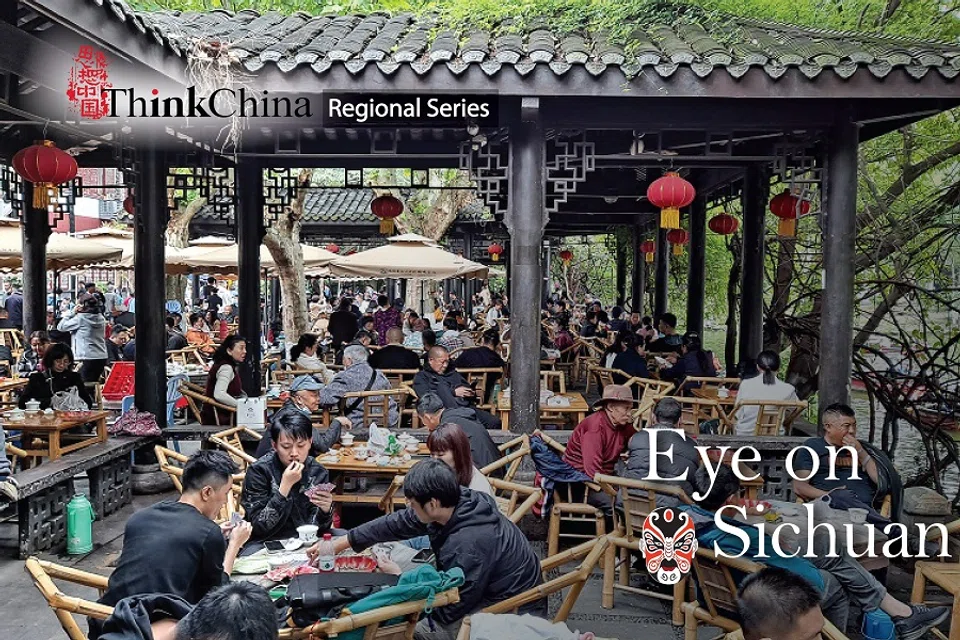
Chengdu-based architect Liu Jiakun has been awarded the 2025 Pritzker Architecture Prize, becoming the second Chinese citizen to receive this prestigious honour, after Hangzhou-based architect Wang Shu in 2012.
Cities are the ant nests built by humans, and Chengdu, a metropolis interwoven with tradition and modernity, embodies the paradoxical yet balanced relationship between nature and construction found in Liu’s work. His architectural responses celebrate the everyday lives of ordinary people, while also illustrating their collective identity and spiritual pursuits.
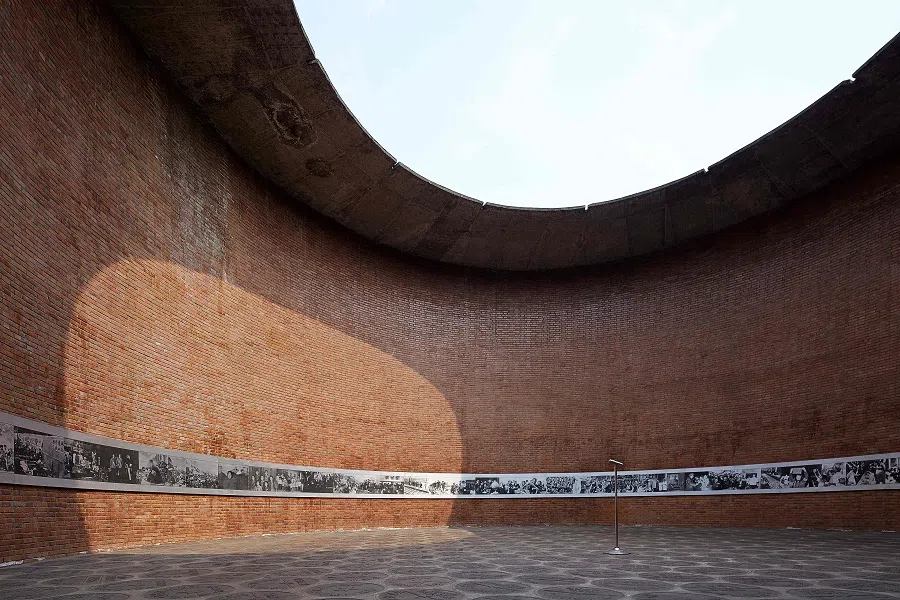
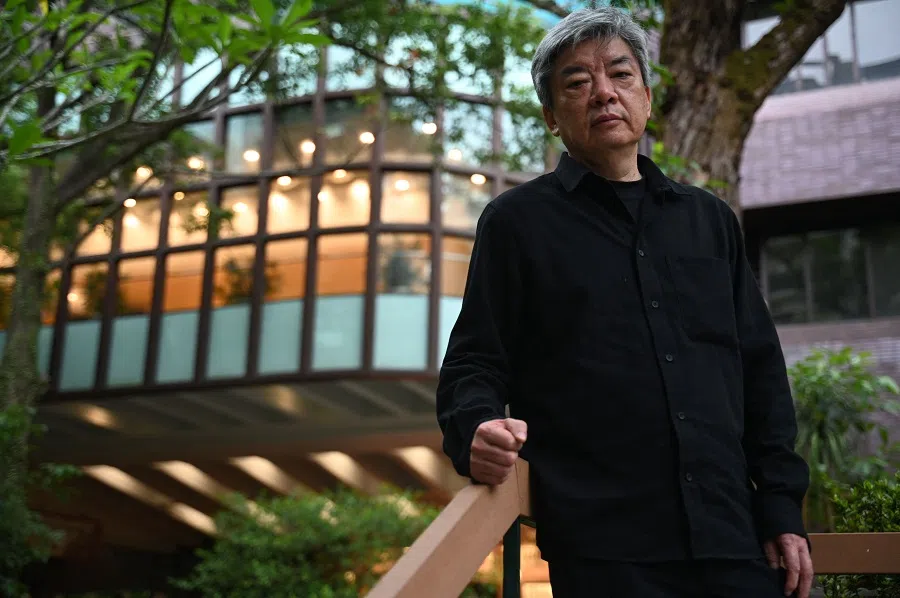
Street stories: Chengdu
Walking along the streets of Chengdu, you will see the picturesque ancient alleys on one side and the dazzling storefronts of international luxury brands on the other. This echoes German-Jewish philosopher Walter Benjamin’s depiction of Parisians navigating the arcades in the early 19th century — those dreams of modernity infused with a complex heterogeneity.
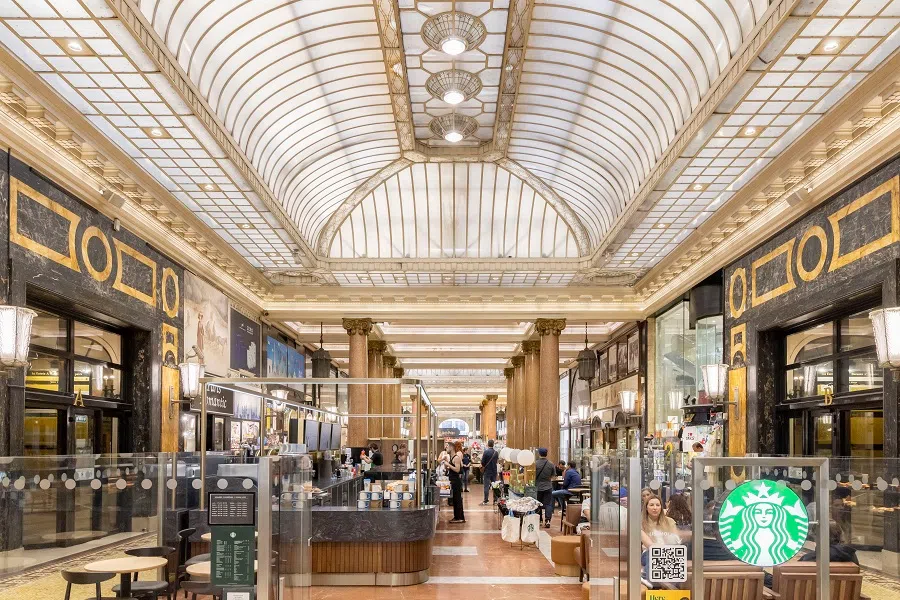
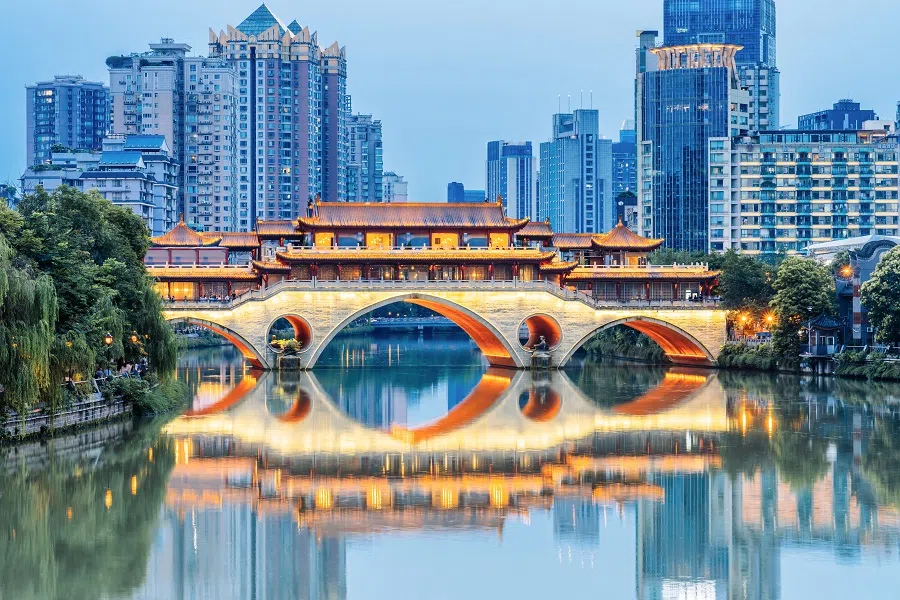
It is precisely the raw, natural pulse of everyday life that is found in the streets and alleys of Chengdu, with their hotpots, skewers, stir-fry restaurants, bean soup rice (beans and rice cooked in a delicious broth), maocai (a stew-like dish composing vegetables and other ingredients in a spicy stock), and sweet potato noodles with pig intestines. It also encompasses activities from reading and visiting exhibitions to cycling, frisbee and camping — these modern lifestyles reflect the diverse and inclusive urban imagination of Chengdu as a city that coexists with nature.
Streets are the most fundamental public spaces that residents share. In the mid-19th century, Chengdu boasted over 400 streets, then 516 by the late Qing dynasty and 734 in the Republic of China era. Kuanzhai Alley (Wide and Narrow Alleys) is demarcated to the north by a line drawn midway between Zhijishi Street and Kuan Alley, incorporating the north wall of the Chengdu Art Academy; to the south by Jing Alley; to the east by the intersection of Changshun Upper Street and Kuanzhai East Street; and to the west by the intersection of Xiatongren Road and Kuanzhai West Street.
Concepts such as “neighbourhood” (街坊 jiefang) and “neighbour” (邻居 linju) are connected by the “street” (街 jie), fostering an acquaintance society and strengthening a sense of urban community.
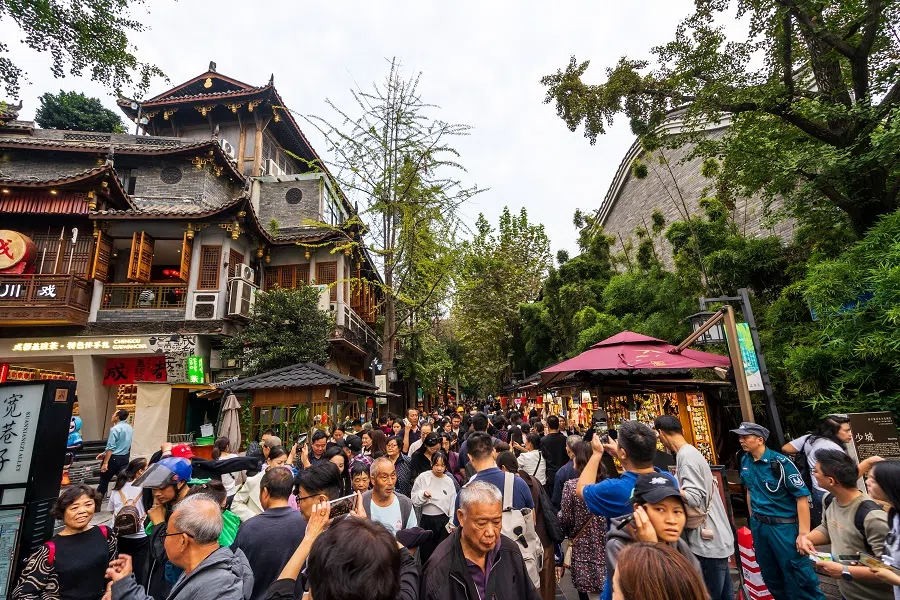
Street culture represents the diverse practices within urban public spaces. It serves not only as a medium for urban transportation and economic activities but also as a stage for the everyday lives of residents. Chengdu streets such as Chunxi Road, Taikoo Li, Yulin Street, Kuanzhai Alley and Jinli Ancient Street are not only living spaces for Chengdu residents but also internet-famous attractions and public spaces in China.
In Street Culture in Chengdu: Public Space, Urban Commoners, and Local Politics, 1870-1930 (《街头文化》), author Wang Di pointed out that streets not only fulfil the diverse needs of urban life but also serves as the most fundamental unit of a neighbourhood or community. Concepts such as “neighbourhood” (街坊 jiefang) and “neighbour” (邻居 linju) are connected by the “street” (街 jie), fostering an acquaintance society and strengthening a sense of urban community.
Meanwhile, the streets of cities are the most important public spaces. They mark urban identity through physical symbols such as city walls, gates and storefront decorations, while also fostering community connections through informal spaces such as teahouses and hole-in-the-wall eateries.
An eclectic and vibrant culture
City walk, as a way of experiencing modernity, first appeared in Benjamin’s The Arcades Project. In 19th-century Paris, flâneurs wandered the arcades and surrounding streets, curiously observing the changing urban landscape, walking a tortoise or turtle on a leash — an image that has become iconic. Through wandering, arcades served as a portal to spy on urban modernity. Similarly, street culture offers the best glimpse into the urban spirit of Chengdu.

To understand Chengdu, one could simply take a walk through the city, which harbours a form of urban culture closely linked to travel, entertainment and leisure. Chunxi Road is undeniably the fashion heart of Chengdu and also the city’s most bustling commercial district. Hailed as the “century-old Chunxi”, it is also a paradise for tourists eager to “check in”. They would pop by a location, and take photos or post updates to social media, virtually announcing to the world that “I came and I saw; I took a photograph and I left”.
Stepping into Chunxi Road is like entering a fashionable universe, a dense array of skyscrapers with a mishmash of trendy elements. Sino-Ocean Taikoo Li Chengdu stands out with its western Sichuan-style grey tiled roofs and latticework. Strolling along, one is surrounded by giant fashion advertisements on department stores, while flagship stores of luxury brands like Gucci and Prada line the streets.
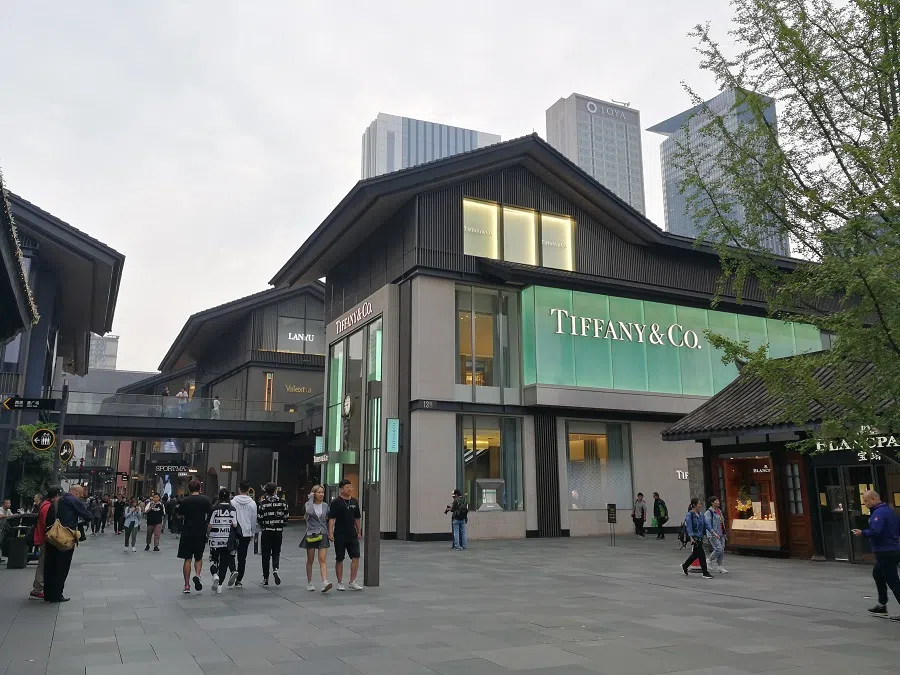
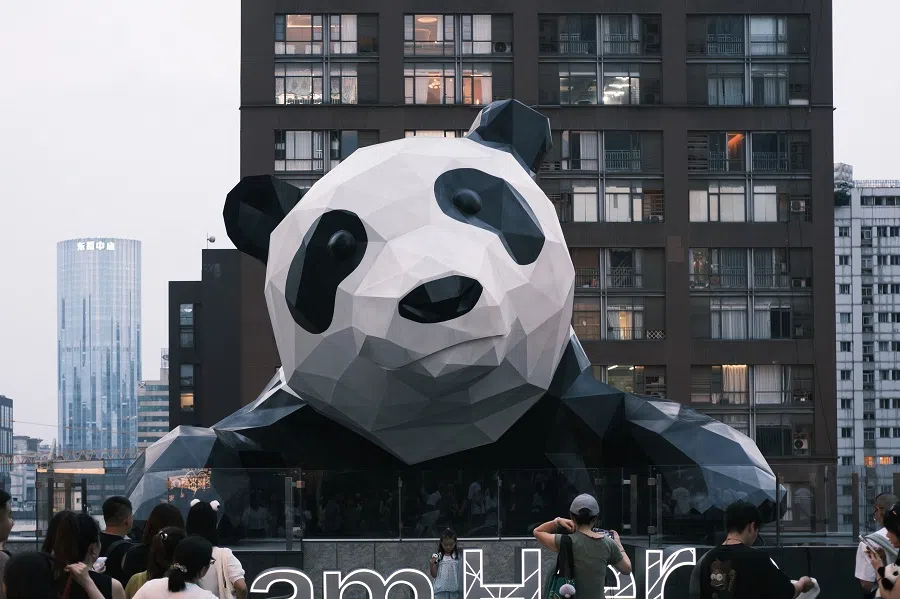
At the adjacent Chengdu IFS (Chengdu International Finance Square), a giant panda sculpture named “I Am Here” clings to the building’s facade, becoming Chunxi Road’s most popular photo spot. Its innocent and naive appearance pairs so well with the surrounding fashionable atmosphere.
Traditional teahouse experience reinterpreted
A few minutes walk from Chengdu IFS brings you to Sino-Ocean Taikoo Li Chengdu. The architecture of Taikoo Li is exquisitely designed, housing everything from international brands to local designer labels. Located on Basement 1 of Taikoo Li, Fangsuo Bookstore is a haven of sophistication and tranquility. Here, one can curl up with a good book on a chair, order a cup of coffee, and enjoy a delightful afternoon. In Chengdu, the answers to a high-quality life are revealed in the relationships between people and nature, the community, and the overall ambience of life.
Teahouses, Chengdu’s earliest public spaces, are now being reinterpreted in the cultural contexts of independent bookstores, coffee shops and community spaces.
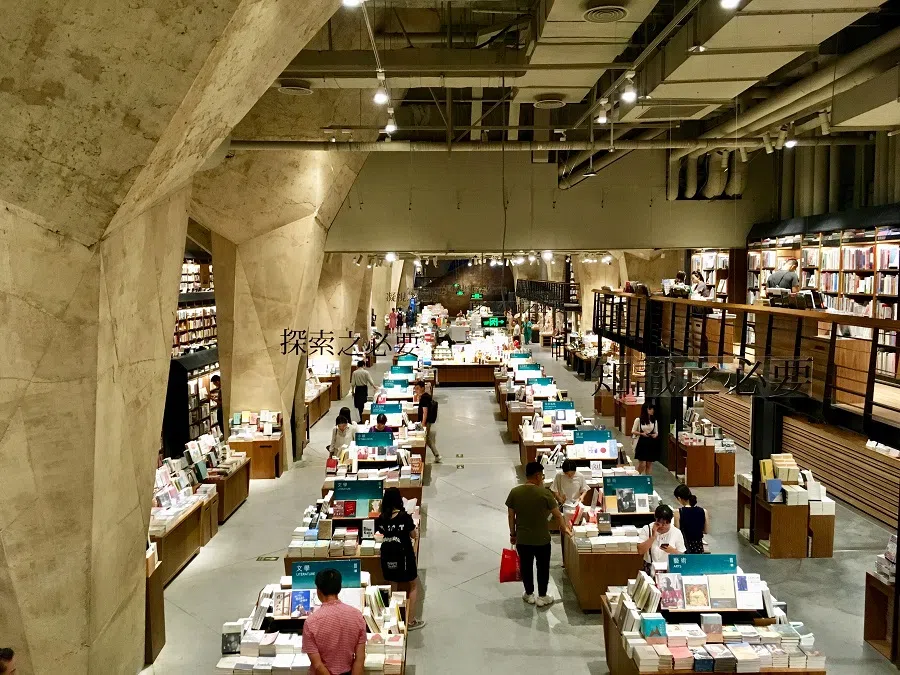
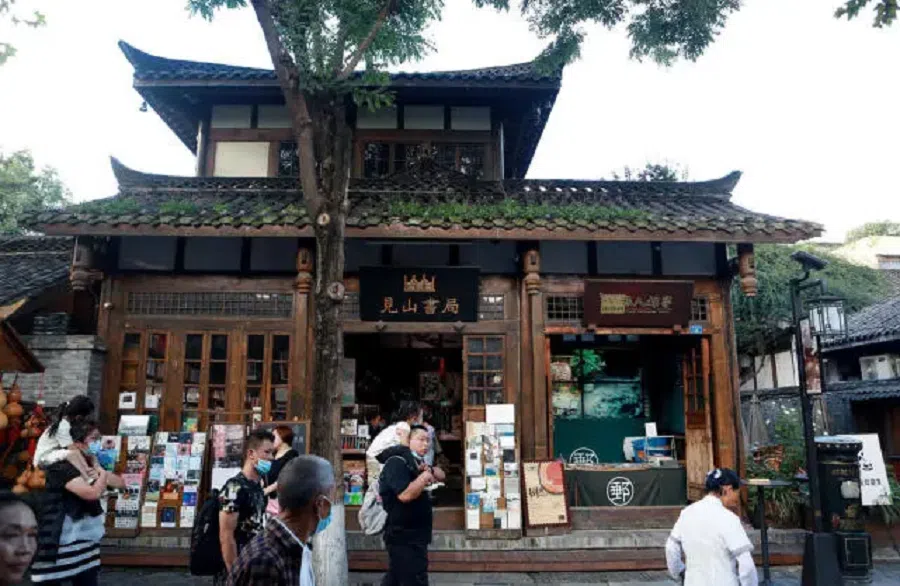
Teahouses, Chengdu’s earliest public spaces, are now being reinterpreted in the cultural contexts of independent bookstores, coffee shops and community spaces. Chengdu currently boasts over 3,600 bookstores, including renowned establishments such as Sanlian Taofen Bookstore and Jianshan Bookstore (见山书局), thus earning the title “Bookish Chengdu”.
Separated from Taikoo Li by only a wall stands Daci Temple, originally built during the Wei and Jin dynasties, boasting a history of over 1,600 years. This is also where Tang dynasty monk Xuanzang received his full ordination. In 618 AD, Xuanzang journeyed from Chang’an to Chengdu, studying Buddhism at Daci Temple under eminent monks. Five years later, he was officially ordained as a monk.
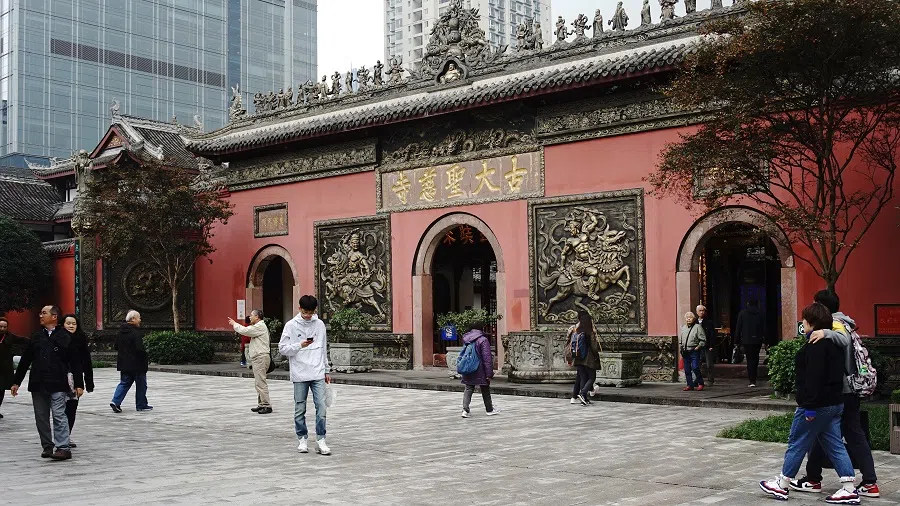
Daci Temple is not only a religious sanctuary — its tea hall is also one of Chengdu’s oldest teahouses. The courtyards within the temple are deep and serene, adorned with red walls and dark grey tiles. The aroma of tea and ancient charm blend harmoniously with the temple’s zen tranquility.
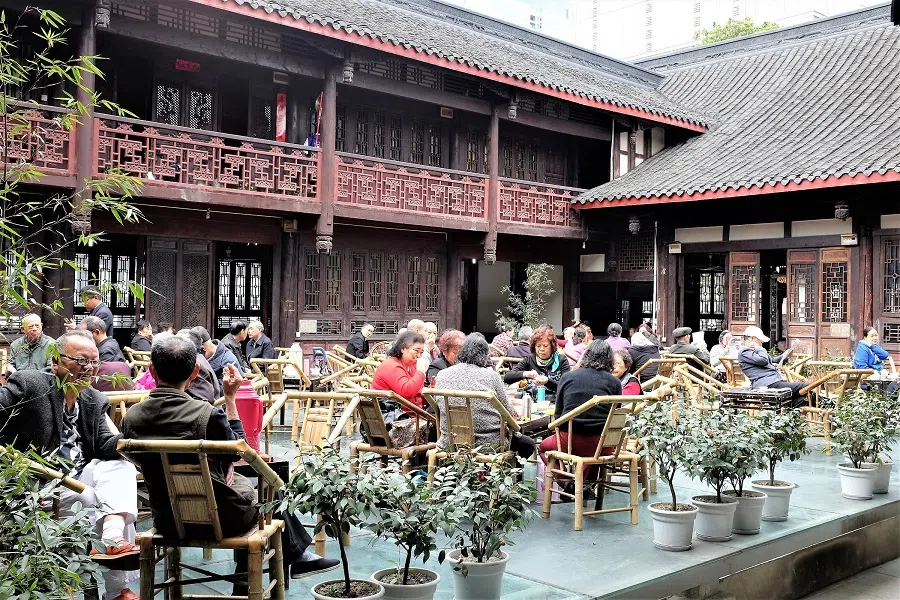
Just two stops away on Metro Line 2 from Chunxi Road is People’s Park, where you can experience the authentic, down-to-earth life of old Chengdu. One of the most iconic places here is the century-old Heming Teahouse. Established in 1923, it is one of the oldest surviving teahouses in Chengdu. If you are lucky, you might even witness tea masters performing spectacular tea-pouring techniques using long-spout teapots.
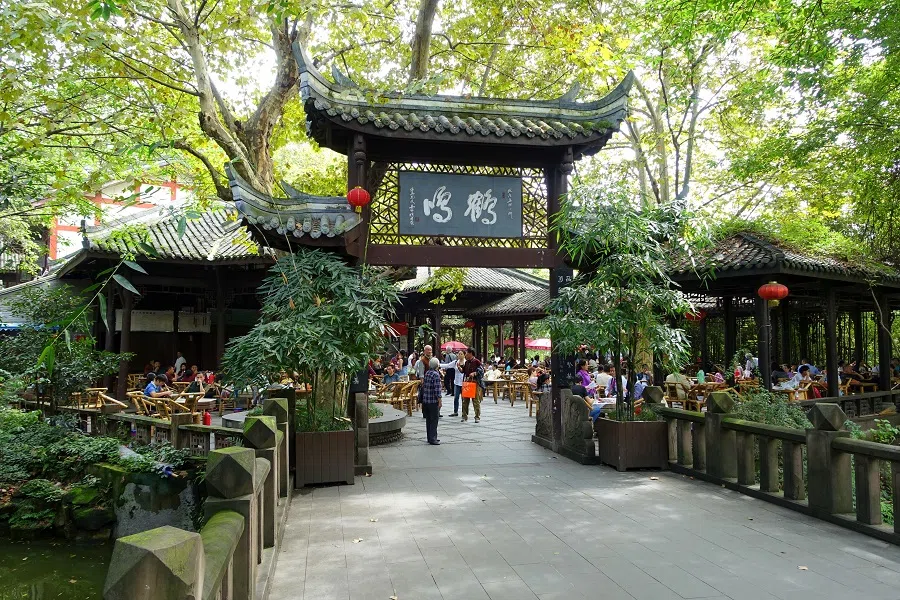
The “18 forms of dragon movements” (龙行十八式) is a tea-pouring performance that blends traditional tea ceremony, martial arts, dance, Zen Buddhism and the principles of I Ching (《易经》). The tea master, wielding a copper pot with a metre-long spout, twists and turns, pouring tea into cups with remarkable precision.
Apart from drinking tea, one can also experience Chengdu’s unique ear-cleaning custom. Using a variety of tools, skilled ear cleaners meticulously pick your ears, creating a tingling sensation that keeps you wanting more.
A 15-minute walk from People’s Park brings you to Kuanzhai Alley, consisting of three parallel alleyways: Kuan Alley, Zhai Alley and Jing Alley. The entire area comprises dozens of late Qing dynasty and early Republic of China era-style siheyuan (四合院) courtyard houses, showcasing the old Chengdu lifestyle.
From hole-in-the-wall eateries still open at 4 am, to two-hour waits at hotpot restaurants, and the unmissable daily ritual of tea drinking, these traditional lifestyles form the rhythm of life in Chengdu and also shape the city’s character.
Showcase of shijing culture
Chengdu’s Kuanzhai Alley is an embodiment of shijing culture (市井文化, the everyday life, customs, habits and values of ordinary city dwellers, particularly in marketplaces, alleyways and neighbourhood gatherings). Shijing culture is a unique category in the development of Chinese culture, characterised by its pervasiveness, popular appeal, trendiness and human touch. Shichan (市廛) refers to a place where businesses gather, known in ancient times as shijing, carrying connotations of “marketplace, market”, as well as “vulgar and unrefined”.
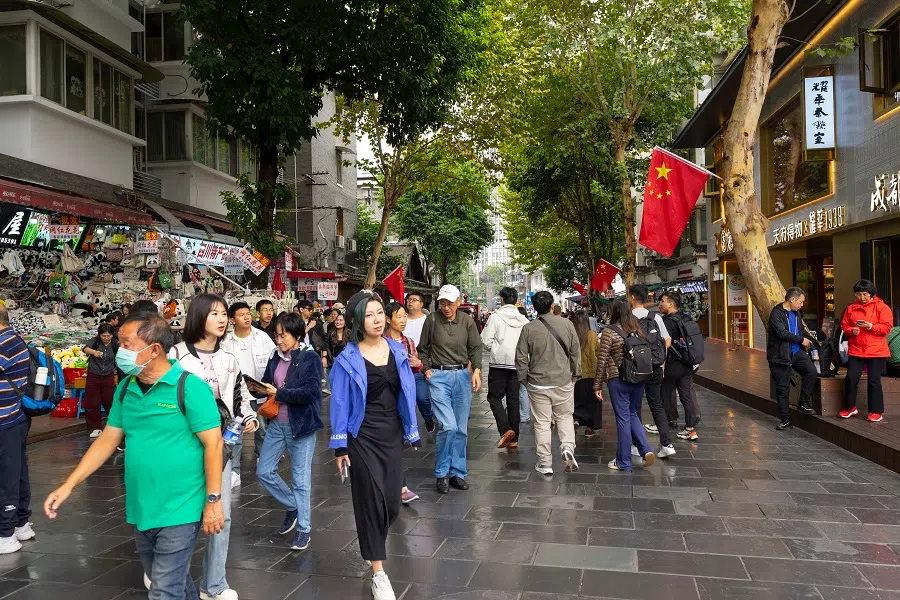
Today, shijing culture is considered a natural culture characterised by everyday life, naturality and spontaneity. From hole-in-the-wall eateries still open at 4 am, to two-hour waits at hotpot restaurants, and the unmissable daily ritual of tea drinking, these traditional lifestyles form the rhythm of life in Chengdu and also shape the city’s character.
In Chengdu fangyan (《成都方言》, Chengdu Dialect), author Han Shaogong explained that “hole-in-the-wall eateries” (苍蝇馆子 cangying guanzi) carries two meanings: one refers to small eateries that prioritise meagre profits over hygiene, while the other simply denotes a small-scale restaurant. It reflects the authentic daily life and mentality of city dwellers, expressing their readily apparent and superficial joys and sorrows. Amid accelerating urbanisation, shijing culture has also become a cultural phenomenon embraced by those seeking a simpler, more primal and genuine way of life reminiscent of the past.
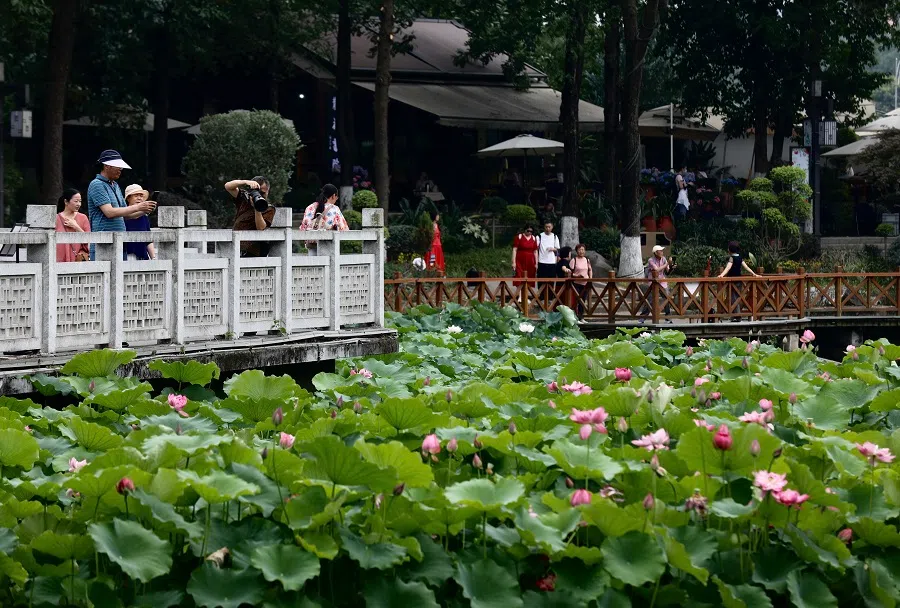
Just as Wang Di has said, “The everyday is the grandest narrative.” In The Teahouse: Small Business, Everyday Culture, and Public Politics in Chengdu, 1900-1950 (《茶馆:成都公共生活和微观世界》), Wang wrote, “Chengdu’s local culture, represented by the teahouse, demonstrates both resilience and flexibility in resisting the homogenisation of national culture promoted by state power and modernisation.” Since social anthropologist Xiang Biao introduced the concept of “the nearby”, discussions surrounding it appear to be endless.
Symbiotic urban relationship
As a city with a relatively high floating population, Chengdu stands out from many other places due to its rich sense of human warmth in its communities, alleyways and distinctive Sichuan dialect. Within Chengdu’s communities, a sense of connection among people and between people and their environment, is palpable. By linking community development with urban governance, Chengdu draws people closer both in their lifestyles and relationships, thereby manifesting a comfortable living atmosphere in “the nearby”.
Like the urban life imagined in 19th-century Parisian arcades, strolling through the streets of Chengdu reveals a harmonious blend of local, everyday life and global, urban modernity. A prime example, Liu Jiakun’s architectural work West Village (Chengdu, 2015), represents a microcosm of Chengdu’s contemporary cultural life encapsulated within a five-storey, ring-shaped building covering an entire city block. Within a dense and limited urban space, he consciously “excavated” a latent “sense of communal solidarity”.
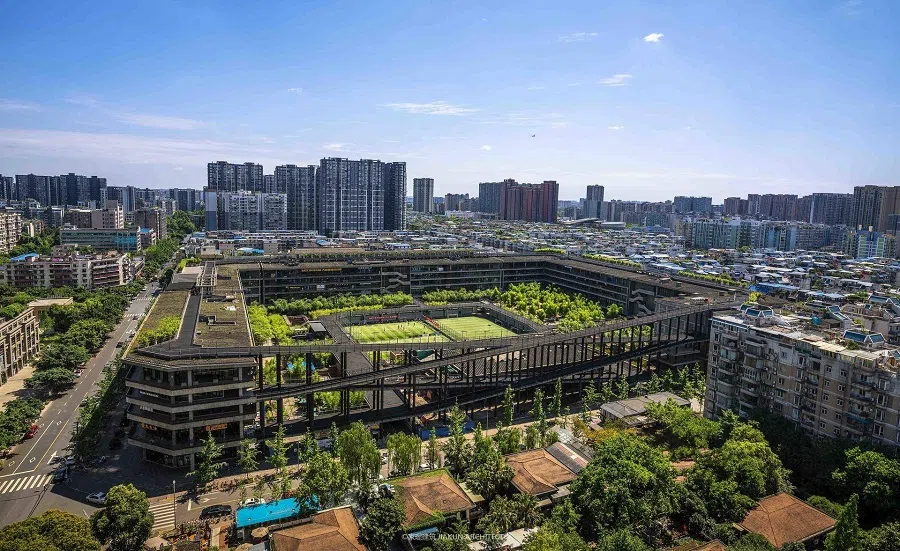
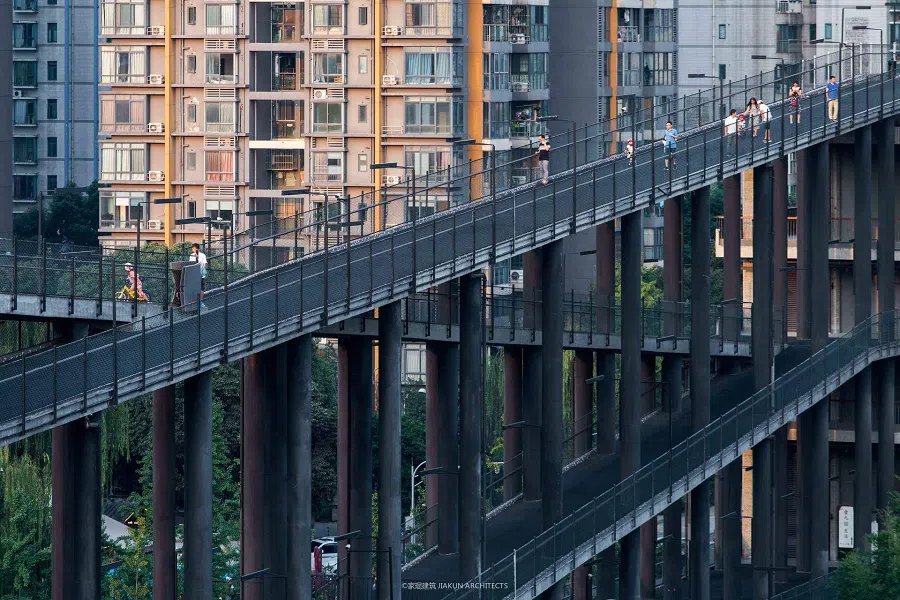
Using innovative techniques, Liu creatively balanced public and private, and open and hidden, recreating an unprecedented Kuanzhai Alley in the air. West Village reconstructs traditional alleyways in a three-dimensional systemic way, integrating various cultural, sports, entertainment, public service and commercial activities.
Looping ramps juxtaposed with elevated trails offer cyclists and pedestrians a greater variety of movement and stillness. The built environment and nature intertwine in a symbiotic urban relationship, with skyscrapers nestled among the infrastructure. People are gathered around tea tables and mahjong tables, catching the familiar aroma of hotpots, bringing the atmosphere back to a local, Chengdu feel.
This is Chengdu for you.





